
We already talked about the concept of a limited palette (check it here). Now it is time to give it a go and try the theory in practice 🙂 If you want to have a peak on my take on the idea of a limited palette read on.
Try to answer some questions first
First
thing I would recommend is to try to answer some questions first.
Your limited palette will quite heavily depend on the model(s) and
current project you are working on. Try to determine how you want to
paint the model first:
– Do you want to follow a specific color
scheme?
– You need cool or warm colors?
– How many colors you
want to use?
– How much mixing you are comfortable to take?
After answering at least some of these questions it is time to choose your color palette.

In my case it is one of the plastic Frostgrave Barbarians from northstarfigures. I have around five of them. They are going to be a part of my warbands for Frostgrave and Rangers of Shadow Deep. So, let me answer some of the questions:
– No specific color scheme, will determine it on the go.
– Probably cool colors – Frostgrave = Winter is coming 😉
– 6 is the maximum (excluding the primer)
– As much as it will take to finish the miniature. I want to learn as much as possible from this experience.
Ok, let’s have a look at our paint collection.
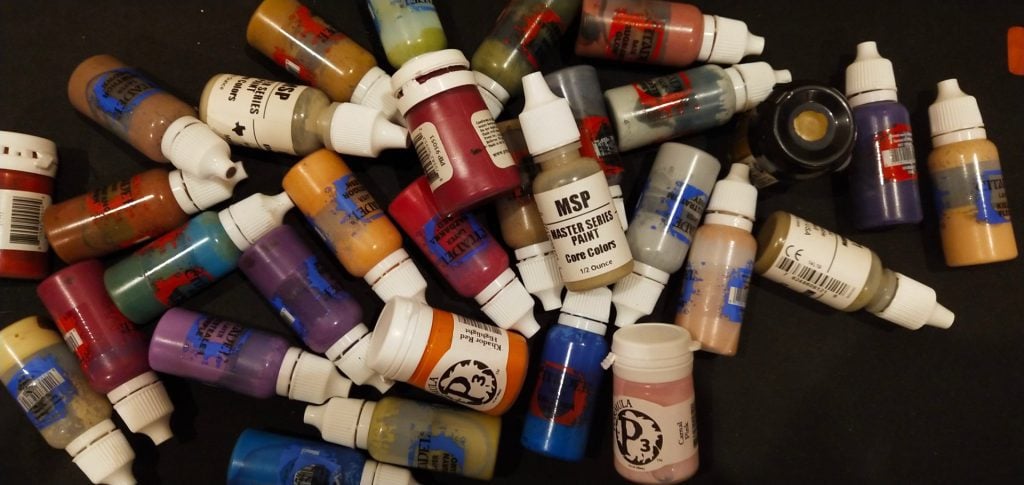
Choosing your palette
When you know what you are going to paint and how you are going to paint it, it is time to choose paints for your limited palette. Painting skin and flesh tones is not my specialty, so a color for skin is a must in my case. Barbarian without some fur is not a barbarian 😛 In such case I need some browns. Red – to mix some red-ish browns and darker brown mixes. Let’s try to paint some ice weapon or maybe some NMM (don’t really like it, but maybe I will give it a try). Blue it is then. Green is the last one. Ok, so why green? Just because xD I liked the color and was curious what mixes I will get with it.
No idea how it will end for me, but I hope to have some fun mixing all those colors together.
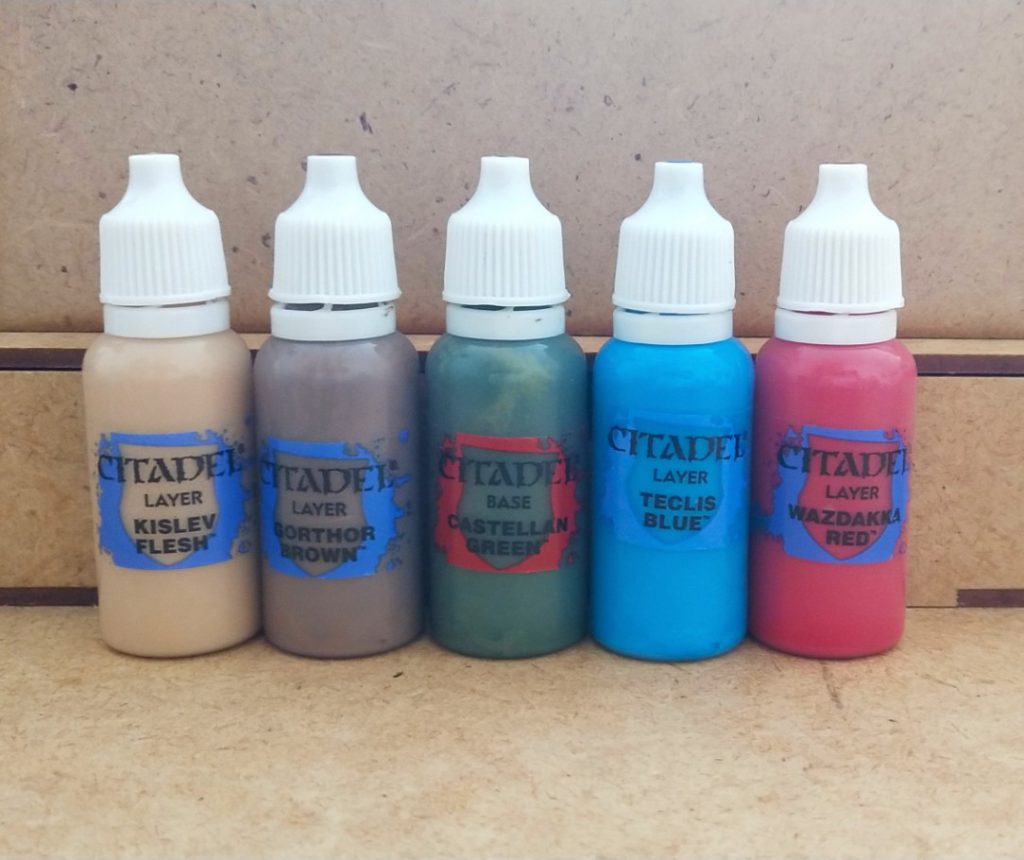
Know your colors
I am still learning how to use a limited palette. Sometimes I am choosing wrong colors and struggling to get a satisfactory result. Next time, I am forgetting how I mixed a particular color or shade and have no idea how to do mix the highlights. So as you can see, it is a constant learning process for me. So what I learned so far?
Know your colors.

I start with making a quick color mixing guide. Just take a piece of paper, write down the name of each paint, and start mixing them together in 1:1 ratio. When you have a general idea what secondary colors you can get, try to make one or two simple color wheels to get some more secondary and tertiary colors. Now you have a starting point and a reference of available colors. You can and certainly will get more different colors, but you can now see what colors to use to get a desired shade and tint.
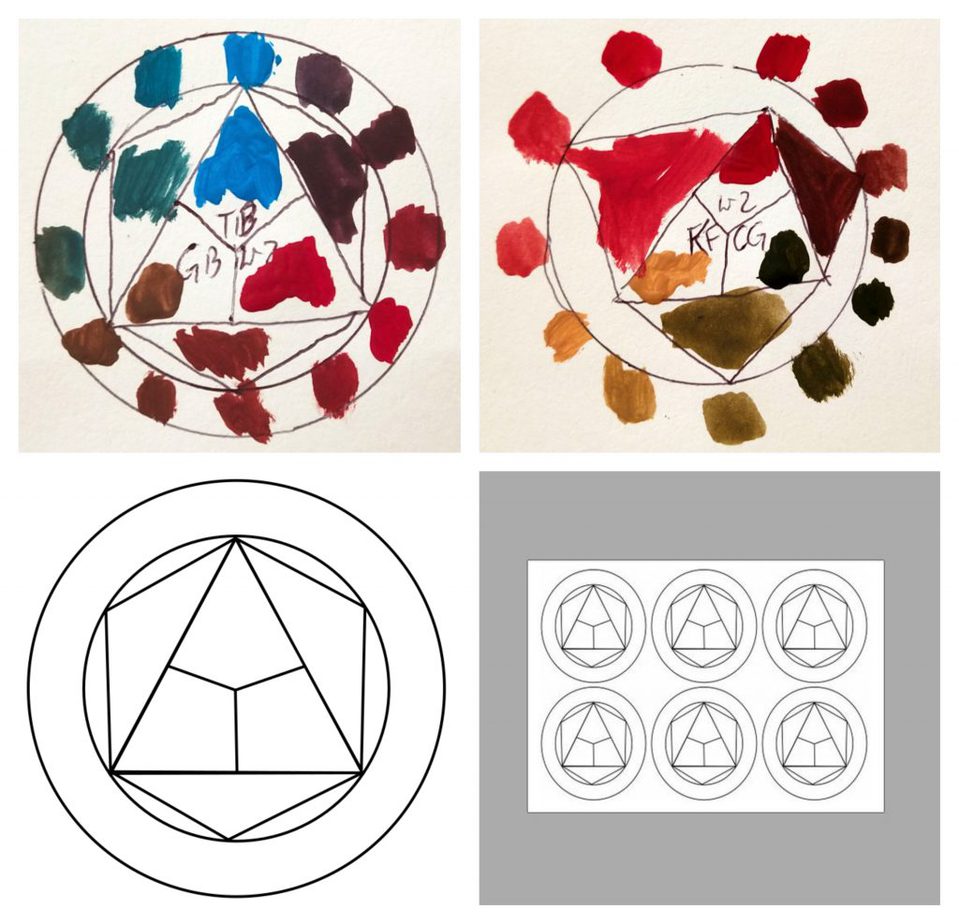
I created a very simple and quick color wheel that you can use for your own projects. The link to download the PDF should be at the end of this article.
What have I learned so far?
As I mentioned before, using the limited palette is still a constant learning process for me. However, I can give you some tips and advice how to make this process easier and more user-friendly:
– Make notes on your mixes. I cannot stress it enough. It will be much easier for you to determine how to mix relevant highlights, shadows or just get back to the basic color.
– Don’t be afraid to experiment. Using a limited palette is just another tool and learning step in becoming a better painter. It will help you understand the color theory better and how all that mixing works in general.
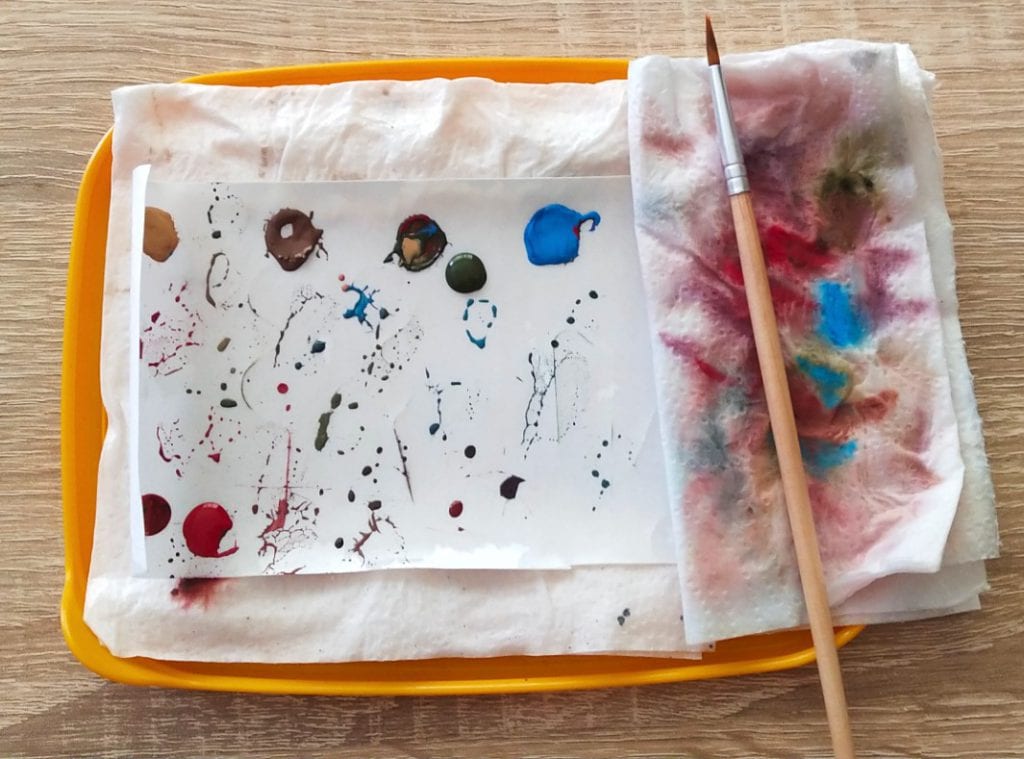
–
Washes. This is a second ‘paint’, that I missed in my palette.
Washes are an easy way to get shadows, and to unify the whole
painting altogether. This is what I missed. You could potentially use
any paint as a wash or glaze by using different techniques and
solvents. The question is, how much of different ‘painting
chemistry’ you want to include in your limited palette.
–
When choosing paints for your palette, remember that most of paints
that we use for miniature painting are not a single pigment paints.
It means that when you are mixing them together it is harder to
predict what result you will get. As in fact, those paints, are also
a mix of different pigments in various proportions. While, when you
are using single pigment paints, you can easily predict what color
you will get when mixing specific colors together. This is a very
important factor to take into account when selecting paints for your
palette as you might find using primary colors and single pigment
paints much easier, in the long run.
– White and Black should be a part of your limited palette. It is just my opinion. This is how it works for me, at least for now. I found out that I can easily work without black, but working without white was a bit difficult at times. With the set that I choose to work with it was hard for me to get the highlights that I wanted. By adding some white to some mixes I would probably achieved better results. Also, white, would end up as my final highlight in few places.
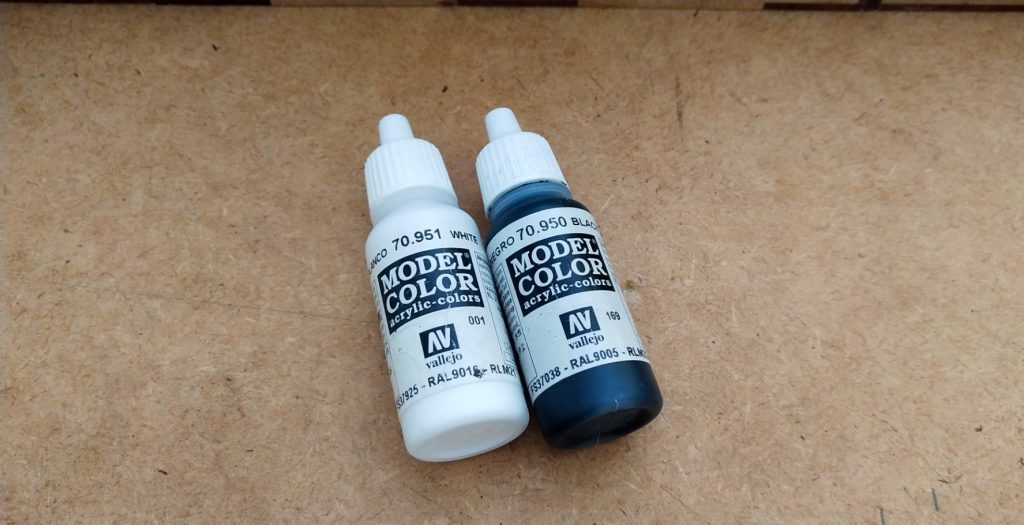
–
If you don’t like what you see, just paint it all over again. If
you are not sure if the highlight you just mixed is right, try it on
the miniature. However, prepare a wet cloth or a clean wet brush to
wipe the paint off if it is not what you are looking for.
–
Sometimes strange color mixes, might work brilliantly when put on the
model. So don’t be afraid to mix 3 or 4 colors together and use
such mix as a highlight or shadow. In some cases it can make wonders,
even if you feel that it will look odd. I for example, used some blue
for the beard in few places, followed by green-ish grey. I really
like the final result.
The same goes for the helmet. I started
with dark violet mix of brown and red, and highlighted it with
pink-ish brown. In my opinion it worked quite well. Which was not as
obvious for me 😉
My mistakes
First of all, please keep in mind that this miniature was painted in just one short (around 1-1,5h) painting session. It is still a WIP (Work in Progress), as I haven’t finished painting the skin, the axe and armguards.
What mistakes I made:
– I really like to turquoise color mix that I managed to get. However, when I am looking at the miniature now, it doesn’t look good compared with other brown-ish leather and cloth elements. In other words, wrong color scheme.
– I struggled a lot with highlighting the turquoise tunic. I changed the mix three to four times, but was never happy with the final result. I should have repainted it
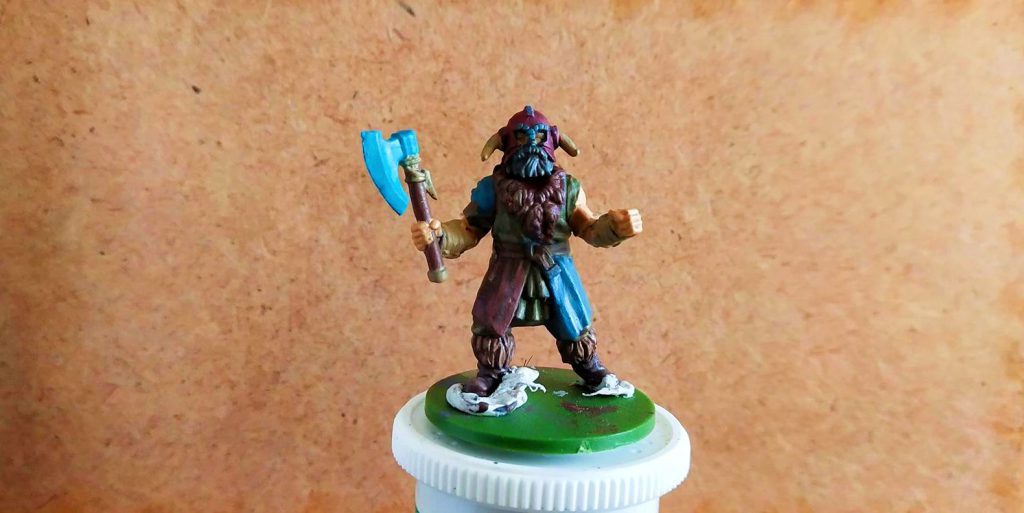
– I forgot what mix I used to paint the fur around his neck, and had no idea how to get proper highlights. Now it doesn’t look to good to be honest. I should have repainted that area using a fresh mix, wrote down the recipe for that mix, and then try to get better color for highlights.
– Overall, I very often used too bright colors as my base colors. I should have used darker mixes and leave the brighter ones as highlights. This simple mistake forced me to use far brighter mixes as highlight than I really wanted. It also made the whole process of mixing much more difficult.
– Contrast. I should have used much more contrast. I am constantly struggling with this, so it is another.

When it will work and when it is a bad idea?
I got a feeling that using limited palette is a good idea with display pieces and more artistic work in general. While, obviously, it is going to be a nightmare when used for army painting. Mixing paints is a fun idea until you are too overwhelmed and too tired to make another batch or the same color for the 10th time during the same painting session.

At the beginning,
when you are trying out mixing for the first time it can be quite
difficult to properly paint a miniature during more than one painting
session. For me, a limited palette works ok, as long as I manage to
finish the model during a single painting session. The more sessions
I need to finish painting, the more difficult it gets to make
relevant paint mixes. Even with notes on recipes.
I do know that
professionals are using limited palette ‘tool’ all the time and
have far better understanding of colors and how they work. However,
for me it is quite difficult at times to get the mix that I want and
that will work well on the miniature.
Try it and figure out your own way of using it
Please remember that all information contained in this article are just my way of using a limited palette. Simply speaking, it is my opinion and my try on this subject. It does not mean that it is the only and right way of doing it. What I am trying to say is that you need to experience it in your very own way, do it as you want and as you need. Painting miniatures is a hobby, and as such is supposed to be relaxing and fun. I hope that your adventure with limited palette is going to be exactly that, relaxing and fun.